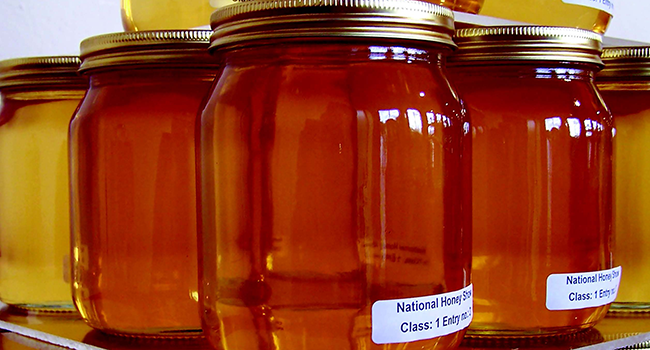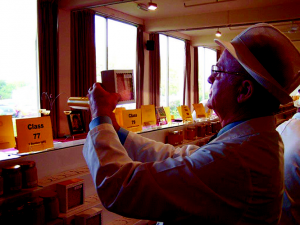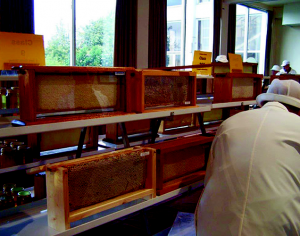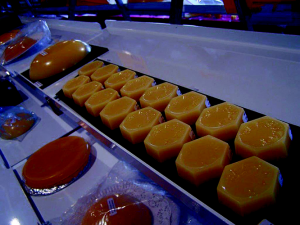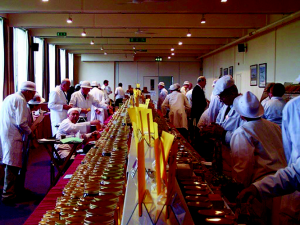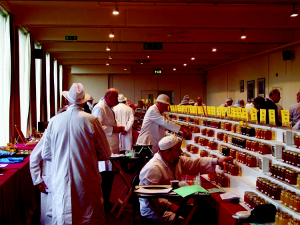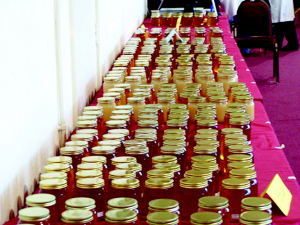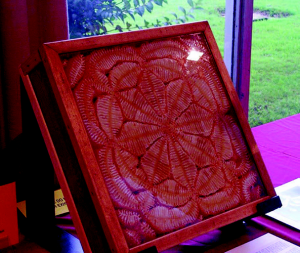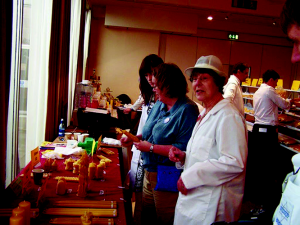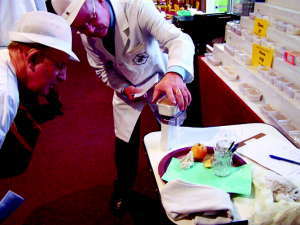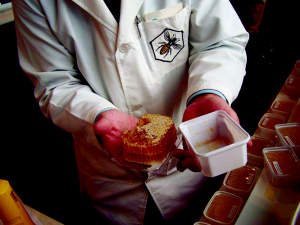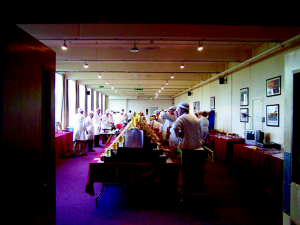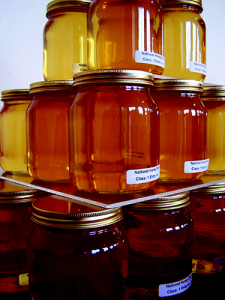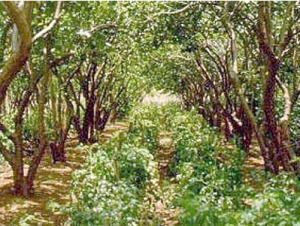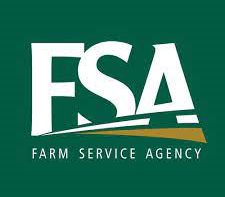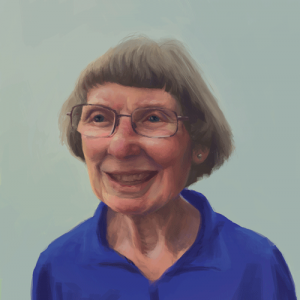
Ann Harman
Get it touch
ahworkerb@aol.com
By: Ann Harman
Rules, Classes, Judges, Records, Workers
This preparing is not about making your honey ready for a show but how bee associations can start to have one or improve their honey show. Local clubs and state associations frequently hold their individual honey shows in autumn, after the busy bee season. Beekeepers have harvested their honey and decisions are being made about show entries.
Every show needs a Show Chairman. First we will consider the Chairman’s tasks for inaugurating a first honey show for an association. In some ways starting a show may be more difficult than if the association has had one for a number of years. Is there a nearby club that holds a honey show? If you, who volunteered to be the first Show Chairman, have never attended it, then plan to do just that. Explain to that Chairman that you would like to visit so that you could see everything that is involved. However, a honey show, especially a first one, needs time for planning and for publicity. So your honey show will have to be much later, perhaps even the following year.
Beekeepers know when their nectar flows happen. That is the time to put honey supers on. However if they do not know a show is on the club’s program they cannot make plans for entering certain classes, for example cut-comb. It requires thin surplus foundation in its honey super. It would be possible to start with a small, simple show with a few classes for extracted honey, probably the most common product beekeepers have. The show can then be expanded the next year by adding such classes as creamed honey and cut-comb.
A successful show needs entries, lots of entries. One entry in a class is not really competition. A single entry should not be given an award if it does not deserve one. Mediocrity should never be awarded. To get the entries publicity is necessary. The members of the club need to be encouraged to enter. Does the association have a newsletter? Many do not. Some clubs may send out information for a summer potluck picnic or perhaps a Christmas party. Ways will have to be found to get information to all the club members, not just once or twice, but frequently enough to keep up the interest. Although it is possible to give information at club meetings, not all the membership can attend.
By the way, are the members being told about the real purpose of agricultural shows. Yes, honey is an agricultural product, just like corn or wheat or apples. The real purpose is actually learning to improve the product for market. Even if a beekeeper with a couple of hives just gives friends and relatives some honey, that jar of honey should not have bee parts floating around in it.
Now to start planning. Classes need to be established. Extracted (liquid) honey can be classified into seven different color groupings: water white, extra white, white, extra light amber, light amber, amber, dark. For a local club show it is definitely not necessary to offer a class for each of these seven different colors. Some parts of the U.S. do not have a plant source for water white, or perhaps for dark. Choose colors appropriate to the club’s nectar sources.
Other honey classes, such as chunk honey, creamed honey, cut-comb, round sections can be offered. It might be valuable to ask members if they produce any of these and if so, would they enter the show. For a club’s first honey show it is wise to fit classes for what the beekeepers would want to enter. The show can always expand the number of classes as interest grows.
One class, with its origins in the UK and brought here with Welsh judging, is the Black Jar class. Honey is usually presented in a small jar painted black on the outside or the honey is poured into a small black container so that its color and any impurities cannot be seen. The winner is the one that tastes the best to the judge. Yes, it is subjective. But that has not influenced its popularity.
Some beeswax entries can be offered. A common class is for a block of wax. Frequently the weight is specified, such as a one-pound or a two-pound block. Candle classes can be for a pair of molded tapers, a pair of dipped, or artistic candles. Photography classes have become enormously popular in shows today. For a first show, one class for photographs may be suitable but if overwhelmed with entries it should then be divided. One class could be for beeyard or meadow scenes, another with a beekeeper doing something in a beeyard or closeups of bees doing something.
Once the initial classes have been decided then it will be necessary to decide the judging. In the U.S. at the moment there are now two judging methods. One would be the most common, using score sheets with points assigned for various criteria, such as moisture content in liquid honey. Measurements would be taken with a refractometer and jars of liquid honey viewed through a polariscope for crystals and debris. Other classes, such as for creamed honey and beeswax classes, would also have numerical scores for various criteria. The other judging method, used now in limited areas, is the Welsh system. To become a judge of this system an exam must be passed. Comments about the quality of the entry, whether honey or wax or photography, are recorded on a card and are not given numerical points. Generally a refractometer is not used. Viewing for crystals and debris in liquid honey is done by shining a flashlight through the jar. Flavor of honey is considered important although this is very subjective, depending on the judge’s taste preferences.
The show information will require some Rules plus the list of Classes and any other information that is important for anyone entering. Rules will state times for entering and for removing entries. An important rule is the one that states that only one entry per person, family or apiary is allowed in each class. This gives everyone an equal entry. In the list of Classes it should state the type of container and how many; for example one, one-pound queenline-type jar with metal or plastic cap. Creamed honey and chunk honey will specify wide-mouth, barrel or straight round jars. Review the Rules and Classes information from nearby clubs with honey shows.
At this point you have decided to have a honey show for your club. One class, or possibly two classes, have become popular. Many children are now participating in beekeeping. The younger ones are working with their parents. Quite a number of teenagers are the beekeepers in the family. Classes for youths are included in some shows. Entry criteria would have to be established – perhaps by age or whether independent or with parents. You will need to determine interest in youth classes.
Show classes and judging methods have been established. It is time to start recruiting some helpers. First could be someone to take care of publicity! The success of the show depends on getting members to enter. Now where to find judges and score sheets? Contact several local clubs that do have honey shows for this information. Yes, you may have to offer a judge money for transportation.
Money! You will need to work with your club’s treasurer. Let’s see what you might need money for. Yes, transportation for a judge, but do you plan to give ribbons, at least for first, second and third? It might be possible to have donations of equipment from beekeeping suppliers for any special prizes you decide to offer. Fortunately your regular meeting room will be suitable for having a small show. However it might be wise to check if it would be available if you plan to have your show on a day different from the regular meeting one. There could be some extra charge for it. You may need some money to make sufficient copies of score sheets and entry forms. Some associations now have their entry forms online if they have a website. Someone entering can fill out the form, print it and bring it to the show along with their entries. Helpers (and you will need them) are simply volunteers and a “thank you” will have to be sufficient. You do not want the honey show to be an expense that will drain the club’s treasury.
What do the Helpers do? The judge, even from a long distance away, should not have contact with the people entering. Therefore, one or two Helpers take in the entries, check the filled-out form, assign a number, place number sticker or tag on entry. Then another Helper(s) takes the entries to the appropriate table. Sometimes these Helpers are provided with the simple lightweight white cotton gloves that are available at hardware stores. The tables for entries should have signs indicating the separate classes. Helpers can assist the judge who will indicate what is needed during the judging. At least one Helper can be useful for cleanup after the show is finished and all the entries have been removed.
One item you can consider is a Suggestion Box. Put a nice big label on it “Suggestions Welcome!” Put a small pile of paper and several pens or pencils next to it and place it near where people are delivering and picking up their entries. Yes, you might get some grumbles from someone who did not win but read through all the suggestions anyway.
If you have space, having a table near the Entry Table can help smooth entering the show. Beekeepers tend to bring their (very precious) entries in a cardboard box crammed with all sorts of packing materials. They need a place to unpack and retrieve the entries from all the wrappings. Unpacking also takes a bit of time. The “unpacking table” really makes entering the show much easier for all.
Oh yes! Be prepared for a catastrophe. They are very rare but can happen, particularly if the show is in very limited space. An open jar of liquid honey gets tipped over. A minor flood on the table, but be quick! before it drips onto the floor. Give profuse apologies to the exhibitor and be certain that it was judged fairly even if only two-thirds of a jar remains.
Every show, new or well-established, needs a Show Chairman whose work for the following year actually begins immediately after the current show. That is the best time to review what went right and, more importantly, what went wrong. You do not want the “went wrongs” to appear again for the next show. Contact all the people who helped with the show. First you want to thank every single one. Remember, they missed parts of the day’s meeting program or activities and you will need helpers next year. Ask them for their “rights and wrongs.” Their input on the “rights and wrongs” is valuable. They will make next year’s show even better. Thank the Helpers for any suggestions they may have.
Keep records! Whether it is the first show or the umpteenth show, those records should be kept and considered important enough to be passed along to future Chairmen. How many people entered, how many entries in each class? If one particular class shows declining entries each year until just one or two enter, then perhaps that class should be dropped – for lack of interest. However you may wish to ask the members if they can think of a different reason. If a class, such as photography is increasing numbers then perhaps one class should be divided into different categories. Is there any interest in some of the different classes held at other shows? Arts and Crafts? Gadgets? A simple quick survey could be taken of all the members. Yes, some will never be interested in entering but you just might get some suggestions that would improve the honey show.
How does a club’s honey show improve marketing? Remember, that is the original purpose. When an entrant finds out – from an experienced honey judge, not from a loving relative – that the liquid honey had weird crystals and a couple of dead bees or was bottled at 19.5% water and will probably ferment, or that the creamed honey was just as runny as if it were liquid – improvement of the product will take place. Then the beekeeper’s honey can start to earn a bit of money for the beekeeper. The honey can take its place at the farmers market or in a small shop. Equipment and new queens cost money. Let award-winning honey become a part of beekeeping.
All photos are from the National Honey Show in the UK.
Ann Harman runs honey shows, judges honey and teaches others how to do a honey show. She lives in Flint Hill, Virginia.




